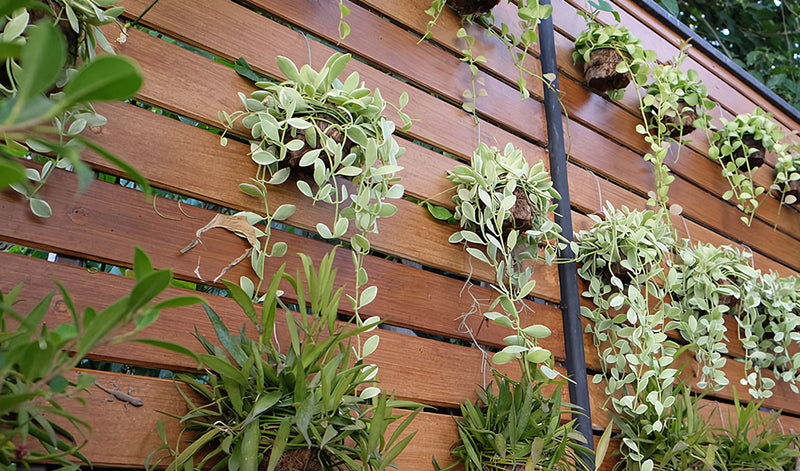

Tips for planting a fig tree
Have you been thinking about planting a fig tree? Get started with this handy guide to growing and pruning fig trees in Australia.
Why grow a fig tree
Originally from the Persian region (including Syria, Iraq, Iran and Afghanistan), figs are an incredibly versatile fruit. They can be eaten fresh or dried, used in cooking, and made into jam. They're easy to pick and the whole fruit is edible – and you don't even have to peel them!
As figs are deciduous, they're a good tree to plant for summer shade.

Types of fig trees
There are quite a few fig tree varieties available with different colours, textures and ripening times. If you have enough space in your garden, try growing a few different varieties such as:
White Adriatic
Suitable for cooler climates, with medium to large brownish green skin, and pink flesh.
Black Genoa
A vigorous tree that has medium sized fruit with a purplish skin and red flesh.
White Genoa
Good in cooler areas and has large greenish yellow fruit with amber flesh.
Brown Turkey
Has brownish striped fruit with pinkish flesh.
Top tips for growing figs
Fig trees can be grown in large pots – perfect if you don't have an ideal spot for them.
They can take three to four years to start bearing good quantities of fruit. But once established, they're very hardy. The crop tends to ripen constantly rather than all at once, so check your tree daily for ripe fruit. Most varieties have a light crop in early summer and a bigger crop in autumn.
Figs grow well in all states as they tolerate humidity, heat and some frost – although they don't like extreme cold.
They also prefer to grow in well-drained loam, and they need a good monthly soaking to swell the fruit. They'll also need lime, so check your soil type and add in if necessary.
Tips for pruning your fig trees
Figs can grow so big that it's hard to pick the fruit. They can be pruned heavily without the risk of killing them, and they can also be sculpted into a ball shape up to 4 metres across for a dramatic architectural specimen.

How to cultivate the common fig
The common fig, Ficus carica, is easy to cultivate. Take cuttings in winter around 25cm in length and store them in the fridge for two to three weeks, as they benefit from a winter chill.
Place the cuttings in coarse sand, with two or three buds below the soil and a couple of buds above the ground. You can have approximately 10 cuttings per pot.
Keep moist in a shady spot until leaves emerge, and then feed regularly until there are a lot of leaves. After four to eight weeks, carefully transplant each rooted cutting to a pot with potting soil and care for until the following winter when they'll be ready to plant in the ground. Otherwise, seek out the preferred variety from your local nursery.
Common problems
Figs may get rust on their leaves, which is a type of fungus. If you see brownish dry leaves with a powdery appearance, cut off the affected leaves and remove them from your property.
You can prevent this through good ventilation around trees and by avoiding watering the leaves. Since rust is fungal in origin, you can use a sulphur spray as a preventive measure – but talk to your local nursery if you need a fungicide.
Figs also leach a milky latex-like substance (or sap) from the plant when the leaves or branch is cut.
Dogs and cats can be poisoned by the latex if they eat the green leaves, branches and bark, causing skin irritation, vomiting and diarrhoea. If your pet eats these parts or is exposed to the sap of the tree and shows signs of distress, call your veterinary clinic.
Some people may also react to the sap on bare skin, so it's best to wear long sleeves and garden gloves when pruning your fig tree.

Pope's DIY tip: Pope's All Purpose Pruners make caring for your fig trees quick, easy and comfortable.
